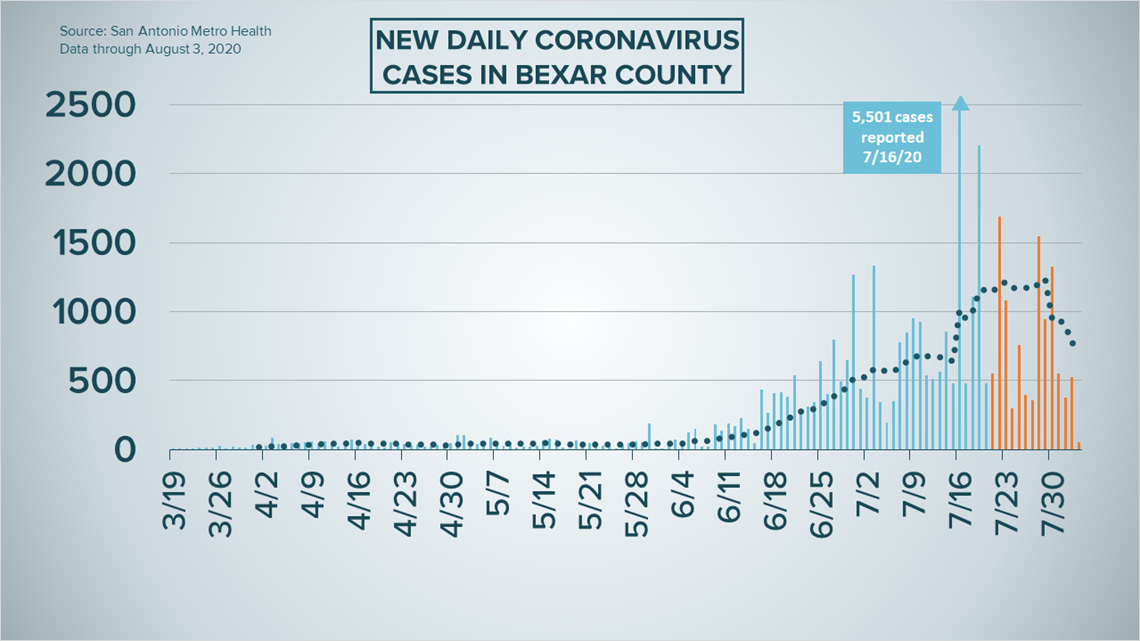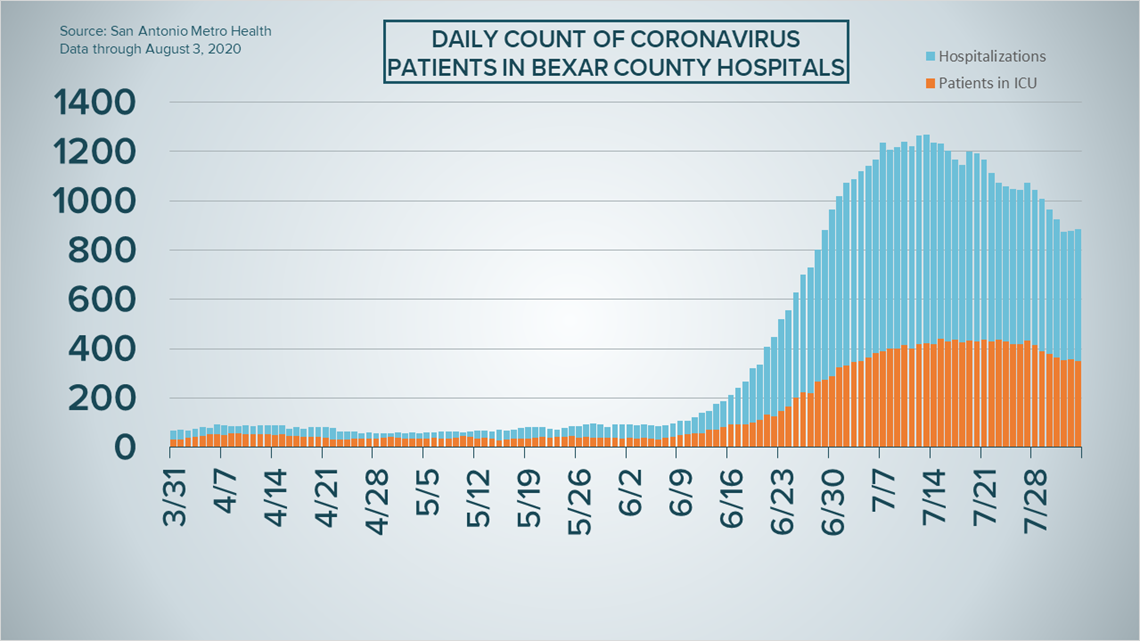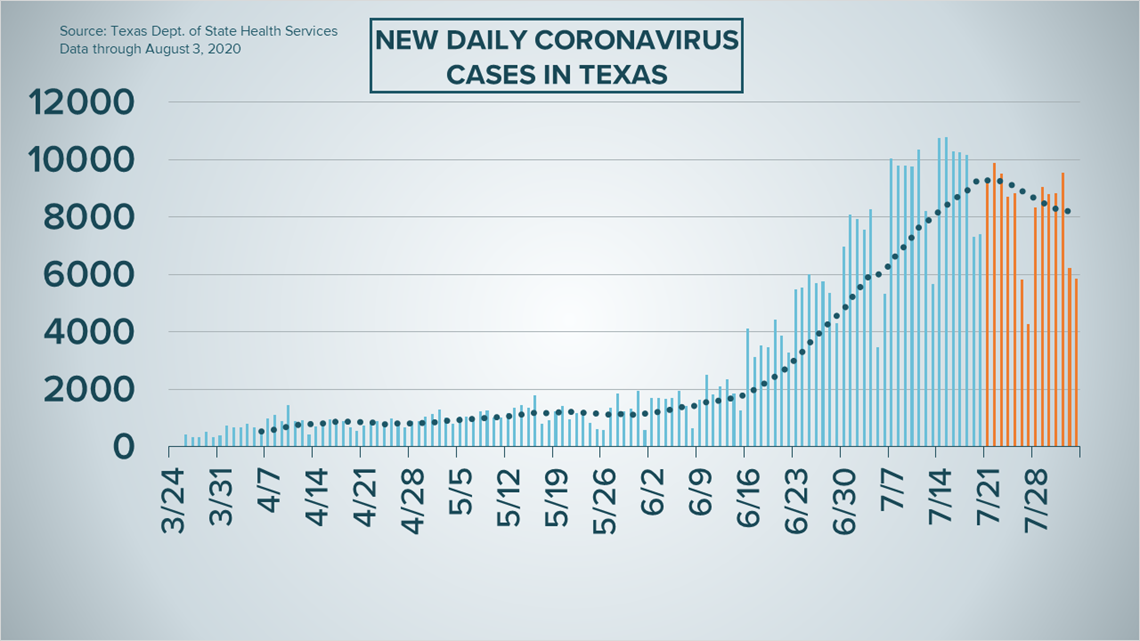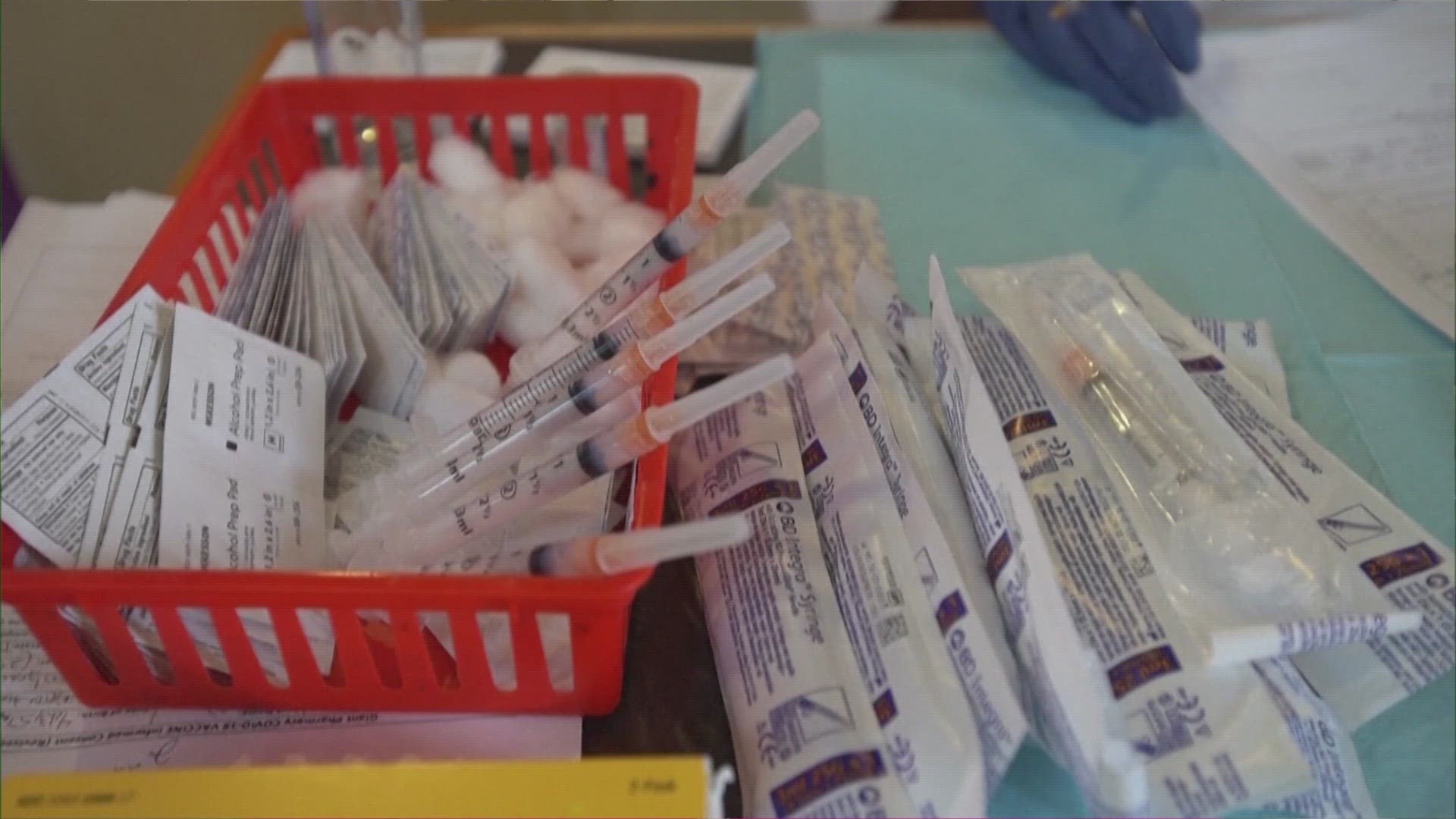SAN ANTONIO — We're tracking the latest numbers from the coronavirus pandemic in San Antonio and across Texas. Here are the latest numbers reported by Bexar and surrounding counties:
- Bexar County: 56 new cases were reported Monday. The total number of cases rose to 41,138. The county death toll rose to 370 after two additional fatalities were reported.
- Comal County: The county reported 13 new cases on Monday, the smallest daily increase in cases since June 11. There have been a total of 2,157 cases as of Monday. There were also two new deaths reported Monday, bringing the total of coronavirus-related deaths to 56. County officials said there are 885 active coronavirus cases, while 1,216 county residents have recovered.
- Hays County: As of August 3, the Hays County Local Health Department confirms there are at least 2,884 active lab-confirmed cases of COVID-19. Since Hays County first started providing numbers, a total of 4,893 lab-confirmed cases have been reported, including 29 deaths. As of August 3, the Hays County Local Health Department has received 21,684 negative test results. At least 1,980 people have recovered from the virus in Hays County. According to the county, there have been 107 total hospitalizations, with 23 still hospitalized as of August 3.
How Bexar County is trending
We're tracking how many coronavirus cases are confirmed in Bexar County each day from the time San Antonio Metro Health began reporting cases more than five months ago. Graphing those daily case numbers along a 14-day moving average provides an accurate picture of the curve in the San Antonio area and the direction we're heading amid the coronavirus.
On Monday, Mayor Ron Nirenberg reported an additional 56 cases of the novel coronavirus in Bexar County.
Nirenberg said that the low count is attributable to the transition to Texas Health Trace data, an online database management system hosted by the state. He also said that Bexar County typically has lower counts Sunday and Monday due to the weekend. The seven-day average remains at about 760 daily cases. Two additional virus-related deaths were reported Monday.


Nirenberg also reported two additional deaths, bringing the total to 370 in Bexar County. He also reported a slight increase in current COVID-19 hospitalizations for the county; on Monday, 886 Bexar County residents were receiving treatment for the virus, up from 879 on Sunday.


Patients in intensive care (350) and using ventilators (238) dropped slightly from Sunday's figures.
Coronavirus in Texas
Texas reported two days' worth of data Monday after giving no reports on coronavirus trends Sunday due to a scheduled upgrade to their electronic lab reporting system.
State health officials reported 6,226 new coronavirus cases across Texas on Sunday and an additional 5,839 cases on Monday, bringing the total to 442,014 since the pandemic started. Of those, an estimated 297,422 have recovered.
The state also reported 142 additional deaths from virus-related complications on Sunday and another 37 on Monday. In all, 7,016 Texans have lost their lives to COVID-19.


Latest Coronavirus Headlines
Coronavirus symptoms
The symptoms of coronavirus can be similar to the flu or a bad cold. Symptoms include fever or chills, cough, shortness of breath or difficulty breathing, fatigue, muscle or body aches, headache, new loss of taste or smell sore throat, congestion or runny nose, nausea or vomiting and diarrhea, according to the Centers for Disease Control.
Most healthy people will have mild symptoms. A study of more than 72,000 patients by the Centers for Disease Control in China showed 80 percent of the cases there were mild.
But infections can cause pneumonia, severe acute respiratory syndrome, kidney failure, and even death, according to the World Health Organization. Older people with underlying health conditions are most at risk.
On June 25, the CDC expanded the list of groups at a higher risk of severe illness due to coronavirus.
Experts determined there was consistent evidence these conditions increase a person's risk, regardless of age:
- Chronic kidney disease
- COPD (chronic obstructive pulmonary disease)
- Obesity (BMI of 30 or higher)
- Immunocompromised state (weakened immune system) from solid organ transplant
- Serious heart conditions, such as heart failure, coronary artery disease, or cardiomyopathies
- Sickle cell disease
- Type 2 diabetes
The CDC believes symptoms may appear anywhere from two to 14 days after being exposed.
Human coronaviruses are usually spread...
- Between people who are in close contact with one another (within about 6 feet).
- Through respiratory droplets produced when an infected person coughs, sneezes or talks. These droplets can land in the mouths or noses of people who are nearby or possibly be inhaled into the lungs.
- Some recent studies have suggested that COVID-19 may be spread by people who are not showing symptoms.
Help stop the spread of coronavirus
- Stay home when you are sick.
- Eat and sleep separately from your family members
- Use different utensils and dishes
- Cover your cough or sneeze with your arm, not your hand.
- If you use a tissue, throw it in the trash.
Lower your risk
- Wash your hands often with soap and water for at least 20 seconds. If soap and water are not available, use an alcohol-based hand sanitizer.
- Avoid touching your eyes, nose, and mouth with unwashed hands.
- Avoid close contact with people who are sick.
- Clean and disinfect frequently touched objects and surfaces.
- The CDC recommends wearing a mask or cloth face covering if you have to be out due to an essential service or essential activity such as going to the grocery store.
- If you are 60 or over and have an underlying health condition such as cardiovascular disease, diabetes or respiratory illnesses like asthma or COPD, the World Health Organization advises you to try to avoid crowds or places where you might interact with people who are sick.



